The U.S. Department of Defense’s Secretary of Defense Environmental Awards winners for 2024 are honoring a move to remove hexavalent chromium coatings from F-35 aircraft.
The F-35 Lightning II Environmental, Safety, and Occupational Health Team in Maryland received an award for implementing a non-chrome fuel tank coating and a non-chrome rapid-cure fuel tank touchup kit at U.S. Air Force-owned manufacturing facilities and at F-35 depots.
The awards recognize installations, teams, and individuals for their exceptional achievements in effective environmental management strategies that enhance installation resilience and mission readiness.
"Understanding that installations built and natural environments strongly impact Service members' quality of life, DOD is committed to ensuring that its installations are healthy, safe, functional and resilient," says Brendan Owens, assistant secretary of defense for energy, installations, and environment.
A diverse panel of 47 judges from federal and state agencies, academia, and the private sector evaluated nominations from DOD Components to determine the 2024 winners. Nine winners came from a total of 31 nominees.
F-35 Lightning II Program
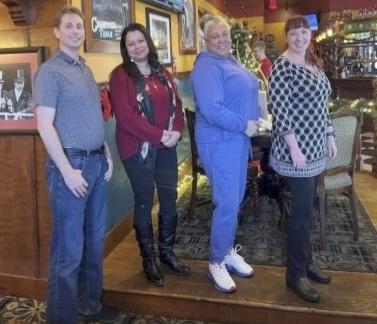 From left to right, Aaron Barker, Mariana Demitry, Daniele Johnson, and Kelly McNamara (USAF). The F-35 Lightning II Program is a U.S. Department of Defense Acquisition Category I-D Program under the direction of a Program Executive Officer and managed by the F-35 Lightning II Joint Program Office (JPO), jointly led by the U.S. Air Force (USAF) and U.S. Navy (USN).
From left to right, Aaron Barker, Mariana Demitry, Daniele Johnson, and Kelly McNamara (USAF). The F-35 Lightning II Program is a U.S. Department of Defense Acquisition Category I-D Program under the direction of a Program Executive Officer and managed by the F-35 Lightning II Joint Program Office (JPO), jointly led by the U.S. Air Force (USAF) and U.S. Navy (USN).
The F-35 Lightning II Program includes three variants: F-35A conventional takeoff and landing variant, F-35B short takeoff/vertical landing variant, and the F-35C carrier variant. The F-35 Lightning II is replacing aging inventories of A-10s, F-15s, F-16s, F/A-18s, AV-8B Harriers, Harrier GR7s, and Sea Harriers. The F-35 Lightning II Environmental, Safety, and Occupational Health (ESOH) Team is the joint service, government-prime contractor team that is responsible for integrating ESOH planning requirements into F-35 system engineering processes and acquisition, production, and sustainment strategies. International environmental compliance and pollution prevention cost savings from the F-35 ESOH Team’s efforts encourage international F-35 sales, which bring income to the U.S. and strengthen alliances.
The F-35 Lighting II ESOH Team includes, but is not limited to, the following:
- F-35 JPO ESOH: James Wilt, F-35 ESOH Lead; Betsy Monillas, ESOH Coordinator; Benjamin Thrasher, USAF ESOH; Julia Lynn, USN/U.S. Marine Corps (USMC) ESOH; Michael Arthur, Foreign Military Service (FMS) ESOH; Brendan Sweeney, F-35 ESOH Subject Matter Expert (SME); and Rich McKinley, F-35 Acoustics SME.
- S. Air Force Life Cycle Management Center (AFLCMC): Daniele Johnson, Pollution Prevention Program Manager; Aaron Barker, Air Force Plant 4 Pollution Prevention Project Manager; Mariana Demitry, Environmental Engineer; Kelly McNamara, AFLCMC ESOH Liaison; and Elizabeth Horwath, previous Air Force Plant 4 Project Manager.
- S. Air Force Research Laboratory (AFRL): Dr. Alan Wall, Acoustics; Hilary Gallagher, Hearing Protection and Communication; Dr. Christin Duran, Environmental Excellence in Weapon Systems Acquisition F-35 Lightning II ESOH Team Environmental Awards 2024 Secretary of Defense Page 2 2024 Secretary of Defense Environmental Awards Certified Industrial Hygienist and Research Chemical Engineer; and Jerimiah Jackson, Environmental Characterization.
- USAF Hardened Aircraft Shelter (HAS) Certification: Master Sergeant (MSgt) Will Maro, F-35 Maintenance Superintendent; Senior Master Sergeant (SMSgt) Justin Kruithof, F-35 Program Integration Office Superintendent; SMSgt Michael Buell, F-35 Operations Superintendent; SMSgt Aaron Seligman, F-35 Security Superintendent; and MSgt Noe Rosas, Major Programs Noncommissioned Officer in Charge.
- Naval Air Systems Command (NAVAIR): Eric Sievert, NAVAIR Fire Science Laboratory, Fire Research Project Manager, and SME; Jason Lint, NAVAIR Fire Science Laboratory, Fire Research Test Manager/Operator; Lieutenant Commander Caleb W. McDonald, NAVAIR PMA-251, Aircraft Rescue, and Firefighting Program Team Lead/Naval Air Training and Operating Procedures Standardization Program Manager.
- Lockheed Martin (LM), F-35 Prime Contractor: Scott Fetter, F-35 LM Environmental, Safety, and Health (ESH) Lead; Megan Brooks, Materials and Processes ESH; Tony Phillips, Pollution Prevention Engineer; Jeb Henderson, Materials and Processes Engineer; Will Betush, Materials, Processes, and Supportability Manager; Thomas Sierra, Materials and Processes Engineer; Matthew Behm, F-35 Materials and Processes Manager; Bradley Butcher, F-35 Landing Gear Lead; and Kevin Scheller, Components Engineer.
- Northrop Grumman Corporation (NGC), Subcontractor: Glen Abad, Materials and Processes Engineer/Environmental, Health, and Safety (EHS) Focal; George Jung, Environmental Engineer, EHS Department; Mike Conley, Global Supply Chain; and Lee Robinson, Materials and Processes Manager.
- Pratt & Whitney (P&W), F135 Engine Manufacturer: Richard Shanks, Associate Director/Green Engine Program and Austin Grandahl, P&W F-35 ESOH Lead.
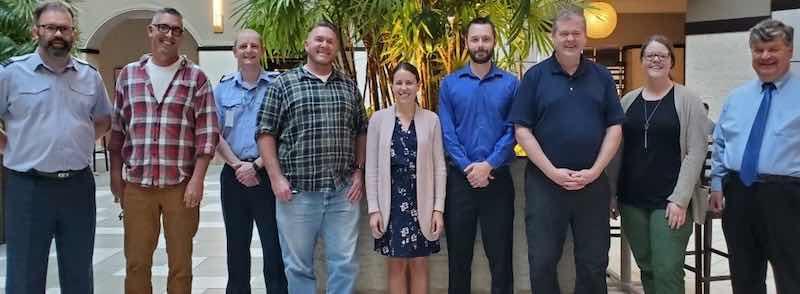 From left to right, Wing Commander Gareth Bean (United Kingdom Royal Air Force), Jason Lindt (USN), Sergeant Wayne ‘Clint’ Eastwood (United Kingdom Royal Air Force), Eric Sievert (USN), Dr. Christin Duran (AFRL), Ben Thrasher (USAF), Scott Fetter and Megan Brooks (LM), and Rich McKinley (AFRL Contractor).
From left to right, Wing Commander Gareth Bean (United Kingdom Royal Air Force), Jason Lindt (USN), Sergeant Wayne ‘Clint’ Eastwood (United Kingdom Royal Air Force), Eric Sievert (USN), Dr. Christin Duran (AFRL), Ben Thrasher (USAF), Scott Fetter and Megan Brooks (LM), and Rich McKinley (AFRL Contractor).
Background
 F-35 JPO and AFRL Team Members visit RAF Lakenheath, UK to collect F-35 operational noise and emissions data to determine safe operating parameters for maintainers, pilots, and even the F-35 aircraft from vibrations. From left to right: Steven C. Campbell, AFRL Research Engineer, Hilary Gallagher, F-35 JPO Hearing Protection & Communication Subject Matter Expert, Dr. Alan Wall, F-35 JPO Research Physicist, and Captain Christopher Hopkins, AFRL Engineer.The F-35 Lightning II is designed and developed by LM Aeronautics in association with NGC and BAE Systems. It incorporates the F135 propulsion system designed and developed by P&W in association with Rolls Royce. Final F-35 assembly takes place at LM in Fort Worth, Texas, Leonardo in Cameri, Italy, and Mitsubishi Heavy Industries in Nagoya, Japan, with components manufactured by thousands of suppliers from around the world.
F-35 JPO and AFRL Team Members visit RAF Lakenheath, UK to collect F-35 operational noise and emissions data to determine safe operating parameters for maintainers, pilots, and even the F-35 aircraft from vibrations. From left to right: Steven C. Campbell, AFRL Research Engineer, Hilary Gallagher, F-35 JPO Hearing Protection & Communication Subject Matter Expert, Dr. Alan Wall, F-35 JPO Research Physicist, and Captain Christopher Hopkins, AFRL Engineer.The F-35 Lightning II is designed and developed by LM Aeronautics in association with NGC and BAE Systems. It incorporates the F135 propulsion system designed and developed by P&W in association with Rolls Royce. Final F-35 assembly takes place at LM in Fort Worth, Texas, Leonardo in Cameri, Italy, and Mitsubishi Heavy Industries in Nagoya, Japan, with components manufactured by thousands of suppliers from around the world.
The eight international partners of the F-35 Program include the U.S., United Kingdom, Italy, Netherlands, Canada, Australia, Denmark, and Norway. Nine FMS customers have joined since the start of the program, Page 3 2024 Secretary of Defense Environmental Awards, including Israel, Japan, South Korea, Belgium, Poland, and Singapore, with Finland, Switzerland, and Germany joining in FY22 and FY23.
The F-35 Program’s strategic international partnerships boost the aircraft’s affordability by eliminating the need for redundant research and development and by providing access to intra-partner technology. The three F-35 variants leverage common parts, materials, and systems, which contributes to its affordability. The primary coatings do not require full repaint, mitigating cost and minimizing exposure to stripping and repainting. The F-35 structure is primarily lightweight composites that save fuel while increasing weight capacity for mission capabilities.
Since its initial production, manufacturing costs have decreased by 70 percent down to $82.5M per F-35A conventional take-off and landing variant, $109M per F-35B short take-off and vertical landing variant, and $102.1M per F-35C carrier variant. Over 200 F-35s were manufactured in FY22 and FY23, totaling over 975 F-35s delivered without any hydrazine, halons, or Freon. As of this award period, 3,453 F-35s have been ordered (with more having since been ordered), most of which will benefit from the F-35 ESOH Team’s efforts described herein.
Accomplishments
Hazardous Material Mitigation Efforts: Hexavalent Chromium
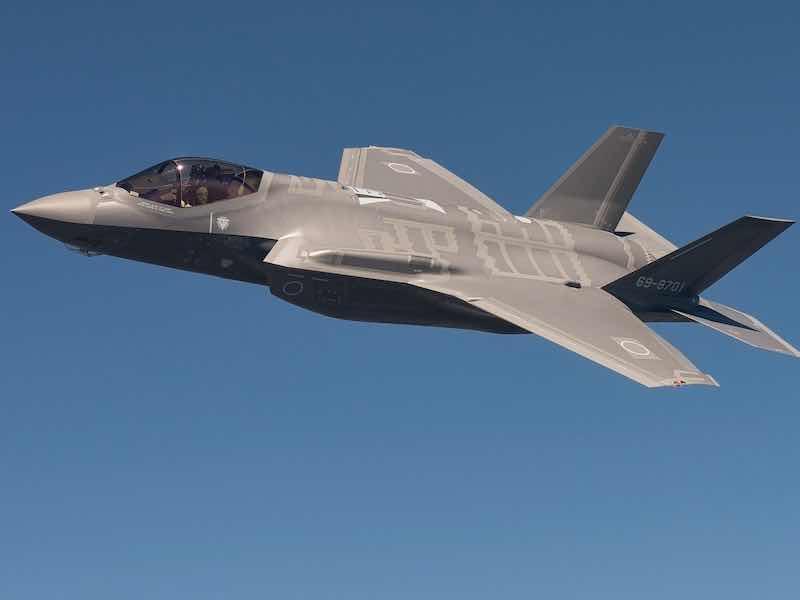 Of all ESOH hazards, the F-35 Program has placed hexavalent chromium as the number one priority for elimination. Hexavalent chromium is a human carcinogen that, when used in manufacturing and maintenance, requires extensive personal protection equipment, industrial hygiene, medical surveillance, training, and hazardous waste handling, which add time and cost.
Of all ESOH hazards, the F-35 Program has placed hexavalent chromium as the number one priority for elimination. Hexavalent chromium is a human carcinogen that, when used in manufacturing and maintenance, requires extensive personal protection equipment, industrial hygiene, medical surveillance, training, and hazardous waste handling, which add time and cost.
The F-35 first flew in 2006 with hexavalent chromium-free primer. Also, the F-35 does not need to be completely stripped and primer reapplied as part of regular maintenance, as with many aircraft, which eliminated significant hazardous processes. There are still other hexavalent chromium applications on the F-35, with the largest overall remaining use being the fuel tank coating. As of this award period, a non-chrome fuel tank coating, including a non-chrome rapid-cure fuel tank touch-up kit, is being implemented by LM and NGC at USAF-owned manufacturing facilities and F-35 depots worldwide.
Approximately five percent of the F-35 exterior is aluminum, which currently uses a thin hexavalent chromium conversion coating under the primer to help prevent the aluminum from corroding. The conversion coating is applied by dipping the aluminum parts in an anodizing solution for the most durable coating and/or brushing the aluminum parts with a chromate coating. These solutions are one-tenth of a percent hexavalent chromium by weight. New hexavalent chromium-free conversion coatings have been developed, but the material solutions are incompatible with the current non-chrome primer. The F-35 ESOH Team is in the process of qualifying a better-performing non-chrome primer that is more compatible with hexavalent chromium-free conversion coatings.
In 2023, LM completed the qualification of non-chrome lens/window sealant and non-chrome bonding primer for composite/aluminum structural bonding. Their subcontractor, NGC, also implemented the product on the refueling light lens at NGC’s El Segundo F-35 production line, thereby eliminating the last chromated sealant used at that facility.
Hazardous Material Mitigation Efforts: Cadmium
Cadmium is another serious, globally regulated human carcinogen. Normal field corrosion damage touch-up maintenance may require light sanding, potentially releasing cadmium. Depot coating refreshes and material damage inspection also requires complete removal of the cadmium with the associated risk of exposure to maintainers. Removal during recycling, the preferred disposal process, also has the same risk. Successful pollution prevention projects and controls have eliminated most cadmium plating from typical applications, such as high-strength steel, fasteners, and electrical connectors. The largest remaining F-35 uses of cadmium are on landing gear and leading-edge flaps, which are now being replaced with zinc-nickel plating. Dalistick, a non-drip brush plating method for hardware, is also replacing traditional cadmium brush plating repair. The ESOH Team is continuing the implementation of non-cadmium electrical connectors on various F-35 subcontractor hardware and airframes, resulting in 98 percent cadmium-free, which leaves only 50 connector pairs with cadmium.
Mishap Response and Decontamination Study
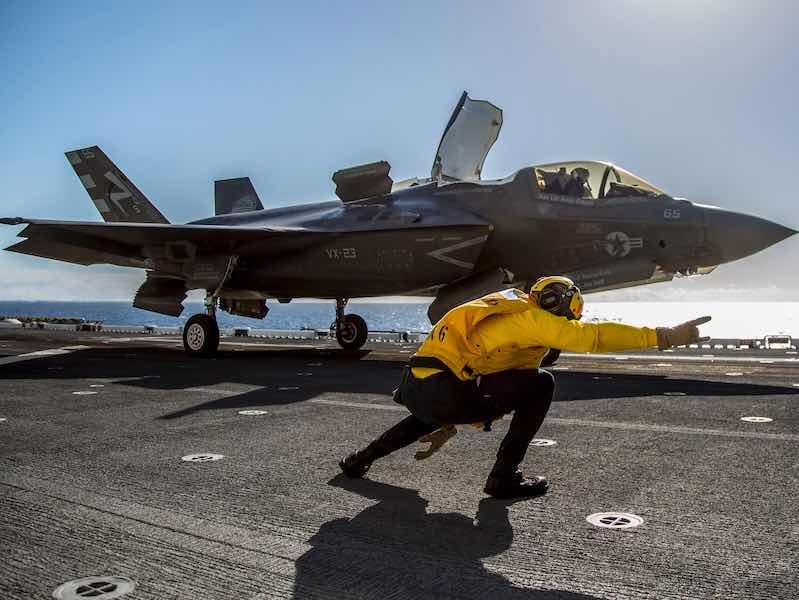 In 2023, wreckage from an F-35 was intentionally reignited to replicate a fiery mishap. AFRL had previously tested small samples of F-35 composites, with and without the low observable coatings, and showed no notable hazards unique to F-35; most commercial aircraft are built with similar composite structures. However, the small-scale studies did not address concerns with deep-seated smoldering from F-35’s extensive use of composites and resulting emissions. AFRL and NAVAIR were sampled for the presence of over 100 suspected particulate and gas emissions. Results showed most emissions were either non-existent or too low for advanced sampling equipment to detect.
In 2023, wreckage from an F-35 was intentionally reignited to replicate a fiery mishap. AFRL had previously tested small samples of F-35 composites, with and without the low observable coatings, and showed no notable hazards unique to F-35; most commercial aircraft are built with similar composite structures. However, the small-scale studies did not address concerns with deep-seated smoldering from F-35’s extensive use of composites and resulting emissions. AFRL and NAVAIR were sampled for the presence of over 100 suspected particulate and gas emissions. Results showed most emissions were either non-existent or too low for advanced sampling equipment to detect.
Like previous small-scale studies, the emissions from the large-scale burn study were found to be typical of an aircraft mishap, with the primary hazard consisting of carbonaceous soot, which is found in burning other carbon-based fuels, such as jet fuel, wood, and gasoline. The composite fibers that became loose after the resin burned away were like large wads of hair and almost all non-responsible sizes. However, the composite fibers presented a dermal irritant, similar to fiberglass insulation, which is why full-body personal protection equipment is recommended. Another notable difference in mishap hazards from legacy aircraft is the F-35’s use of lithium-ion batteries. If these batteries ignite, they are subject to release toxic hydrogen fluoride gas, like a modern electric vehicle fire; however, electric vehicles typically have more lithium-ion batteries by weight than an F-35.
The study also analyzed methods of decontamination for mishap responder gear, which due to exposure to unknown hazards was often previously discarded after a mishap. The composite fibers were found to be easily removed with a common vacuum. The study results justify safe reuse of firefighter and other responder gear in general aviation mishaps. The study findings are being finalized and will be incorporated into mishap response guidance.
Air Pollution Reductions
LM, with support from AFLCMC, implemented a low-volatile organic compound (VOC) moisture barrier coating at U.S. Air Force Plant 4, F-35 final assembly facilities in Fort Worth, Texas. The previous coating had the highest density of VOCs of any coating used at the facilities at 800 grams per liter (g/L). The new coating has 17 g/L of VOCs – a 97.86 percent reduction! Savings are estimated to be two tons per year of VOCs, and the benefit of eliminating the use of three hazardous air pollutants is that of methyl ethyl ketone, dimethylformamide, and antimony trioxide.
In 2023, AFLCMC and LM finished the qualification and implementation of Rapid Tac II, a fluid that allows for pressure-sensitive adhesive boots to be repositioned before permanently adhering, thereby minimizing rework and waste. The boots are sheets adhered to the aircraft in specific locations to adsorb radar, contributing to the F-35’s low observable signature. The use of Rapid Tac I and II resulted in a total reduction of 134 tons of VOCs. Also, beginning in 2023, the use of these boots was expanded to replace additional thick-build hazardous coatings; the savings from projects with the boots are estimated to be $5,200 per aircraft, with a total savings of $16M.
The F-35 ESOH Team completed the qualification and implementation of low-VOC insulative coating, which lowered VOC contents by 87 percent and resulted in 1,860 pounds of reduced VOCs in air emissions. The team continues to research, develop, and qualify isocyanate-free coatings. The qualification of isocyanate-free topcoats for F-35 support equipment is complete, and the qualification of an isocyanate-free topcoat for F-35 aircraft is currently underway.
Manufacturing previously required the application of new primer on all fasteners prior to covering them with hot dots. Hot dots are melted over the fasteners in support of the F-35’s low observable signature. NGC validated and implemented the use of Wipe Reactivation of Aged Primer (WRAP) in lieu of primer. WRAP implementation at NGC increased the efficiency of hot dot work from 90 to 100 percent, and the effort reduced material cost, VOC emissions, and hazardous waste generation. In addition, NGC implemented a new fuel tank sealant that contains 92 percent less VOCs than the previous sealant and is significantly less expensive.
Certification of F-35 Operations in Hardened Aircraft Shelters
 The F-35 ESOH Team led acoustic and chemical emissions data collection and research for F-35 operations in USAF HASs at Royal Air Force Lakenheath, United Kingdom, and accelerated the rate at which HAS certifications were performed across U.S., partner, and FMS installations. Certification is needed to demonstrate that F-35 operations in HASs are safe for the pilot, maintainers, and aircraft because the shelters’ enclosed and concave structure concentrates jet engine noise, vibrations, and emissions. High acoustic levels on the airframe can lead to fatigue and structural failure.
The F-35 ESOH Team led acoustic and chemical emissions data collection and research for F-35 operations in USAF HASs at Royal Air Force Lakenheath, United Kingdom, and accelerated the rate at which HAS certifications were performed across U.S., partner, and FMS installations. Certification is needed to demonstrate that F-35 operations in HASs are safe for the pilot, maintainers, and aircraft because the shelters’ enclosed and concave structure concentrates jet engine noise, vibrations, and emissions. High acoustic levels on the airframe can lead to fatigue and structural failure.
F-35 operations in HASs include running the integrated power package (IPP), main engine start, taxi out, reset of IPP Maintenance Built-in Test (MBIT) – 30 percent Engine Thrust Request (ETR), and in some cases, high-speed low-thrust MBIT. The F-35 ESOH Team reviewed the F-35 enterprise-wide HAS requirements, configurations, and locations at 35 installations worldwide – including 17 partner/FMS countries and deployed locations; approximately 30 unique HAS configurations (53 including cigarettes) with no less than 11 different efflux chamber and jet blast deflector designs, and at least four unique hush house configurations.
Environmental safety laws and regulations for partner countries and FMS customers were reviewed against operational procedures. The HAS certification includes recommendations for safely conducting operations at specified locations in the HASs, hearing protection, maintenance personnel locations, and personnel exposure time limits for acoustics and chemical emissions exposure. The certification of F-35 operations in HASs enables uninterrupted mission security and ensures the F-35s are safe to fly after operating in HASs, specifically for engine usage beyond 15 percent ETR. Lowering the risk of structure fatigue ultimately supports an 8,000-hour life expectancy for the F-35.
The F-35 ESOH Team also determined which HAS configurations require full acoustic and chemical data collection as well as those that may be certified by similarity. Acoustics and chemical emissions data collection in all HASs costs $1.2M to $1.7M per country/installation and takes 12 to 16 months to complete. Performing HAS certifications by similarity costs are approximately $25,000 to $50,000 per HAS type and take 3 to 6 months to complete. Depending on the number of F-35 partner country HASs that can be certified by similarity rather than full acoustic and chemical emission measurements, the F-35 ESOH Team will save the F-35 Program millions of dollars and complete the remaining certifications in a few years instead of decades.
Hearing Protection Calculator Distribution and Training
The F-35 ESOH Team continues to distribute the “Hearing Protection Calculator” that characterizes F-35 noise and determines estimated noise exposure for F-35 maintainers coupled with the best hearing protection. The Team collaborated with USAF, USN, USMC, partner countries, and FMS customers to collect physical acoustics data on the flightline and flight deck in order to attain relevant noise profiles for F-35A, B, and C variants. The calculator is made available to the F-35 user community as part of U.S., partner countries, and FMS customer site activations.
Global Environmental Compliance and Sustainment
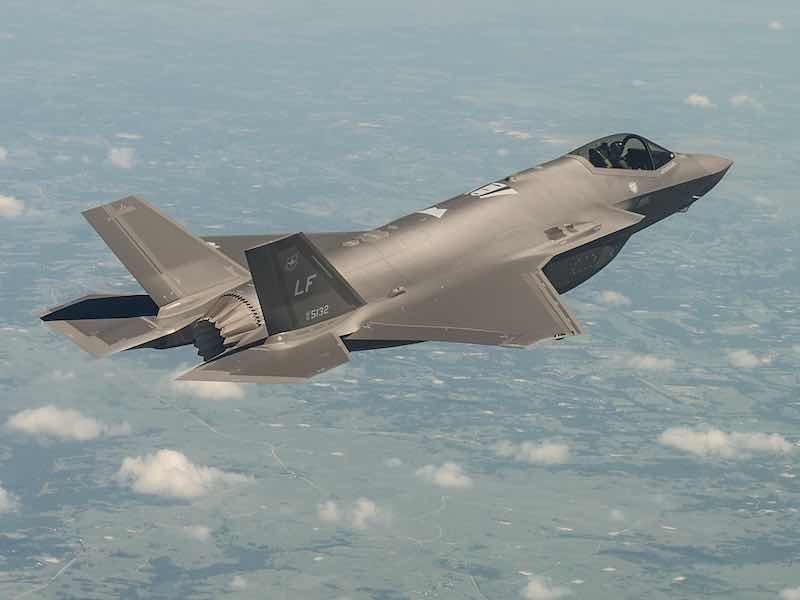 The F-35 ESOH Team supports ESOH site compliance that enables local maintenance at 41 sites, 31 bases, and ten ships across 14 services. Additional sites receive ESOH support as they are identified and moved to active status. The F-35 ESOH Team complies with environmental regulations across 17 countries. Additionally, the Team supports site activation, which includes facility design and operations to mitigate hazards and comply with local regulations. The F-35 ESOH Team regularly ensures the implementation of climate-controlled hazardous materials storage for various support and maintenance activities at each site to preserve the shelf-life of F-35 coatings and hazardous materials, thereby minimizing waste and reducing costs.
The F-35 ESOH Team supports ESOH site compliance that enables local maintenance at 41 sites, 31 bases, and ten ships across 14 services. Additional sites receive ESOH support as they are identified and moved to active status. The F-35 ESOH Team complies with environmental regulations across 17 countries. Additionally, the Team supports site activation, which includes facility design and operations to mitigate hazards and comply with local regulations. The F-35 ESOH Team regularly ensures the implementation of climate-controlled hazardous materials storage for various support and maintenance activities at each site to preserve the shelf-life of F-35 coatings and hazardous materials, thereby minimizing waste and reducing costs.
The AFLCMC and LM are conducting qualification testing to further extend shelf-life. Three coatings show promising results with expectant shelf-life extensions from one to six months, depending on material and storage temperature. This effort will result in $166,000 in cost savings per year for these three coatings at F-35 manufacturing and depot sites alone. Additional coatings are subject to be evaluated for additional shelf-life extensions.
The F-35 ESOH Team effectively managed seven major contracts with prime contractors from the initial concept stage to the final deliverable. The scope included over 30 deliverables that facilitated the delivery of hazardous materials identification, tracking, and reduction; European Union (EU) Registration, Evaluation, Authorisation and Restriction of Chemicals (REACH) and Article 33 compliance; personnel and environmental hazard tracking; demilitarization and disposal planning; as well as partner country and FMS customer laws and regulatory compliance.
The F-35 JPO, LM, and P&W played a crucial role in managing compliance with EU REACH, Article 33, and Substances of Very High Concern management. This accomplishment guarantees the continuous production and maintenance of F-35s in the EU countries. As an example, the F-35 ESOH Team supports continuing Aerospace Defense Chrome Re-Authorization consortium activities, which provide a continued supply of hexavalent chrome products for European production and sustainment while the Team completes replacement implementation previously discussed.
For more information about the Secretary of Defense Environmental Awards Program, please visit www.denix.osd.mil/awards
All F-35 images courtesy of Lockheed Martin






































